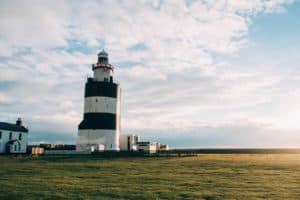Faroe Islands: A Great Escape to Nature’s Charm
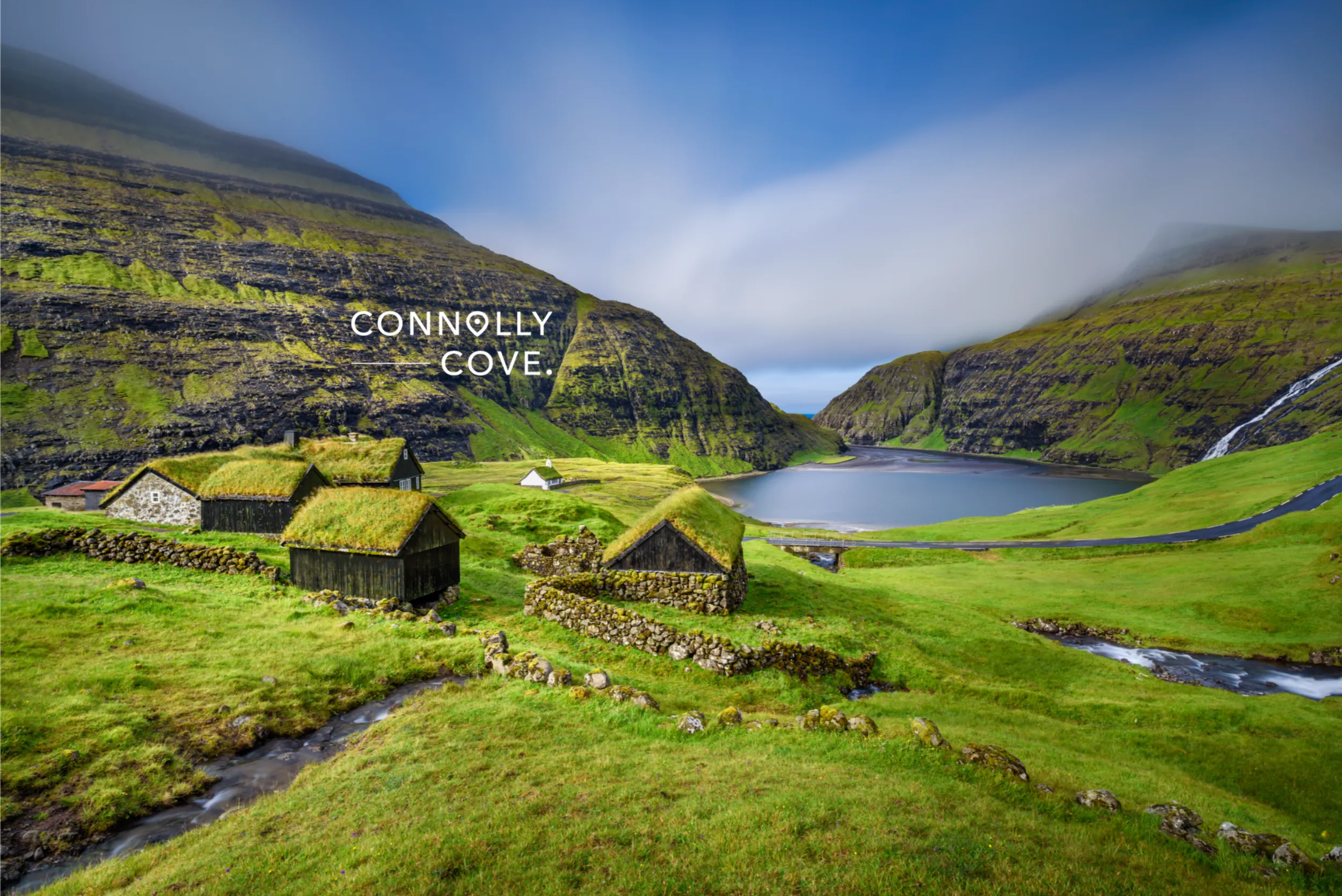
Updated On: April 20, 2024 by Marwa Abdel Moniem
Ever wondered what it is like to live on the edge of the world? Well, you can have such an image as a background on your PC, but picturing yourself within this wallpaper —oh, what a place!
Discover the Faroe Islands, a remote archipelago where there are more sheep than people. Join us as we uncover the mysteries of this remote Nordic paradise, where rugged cliffs meet the endless expanse of the North Atlantic, where ancient traditions blend seamlessly with modern life, and where nature’s beauty unfolds in ways that seem almost otherworldly. So, pack your bag; we are taking you on a journey halfway between Norway and Iceland. First thing first, here is some background information about the place!
Table of Contents
It’s Tradition & It’s Continuing!
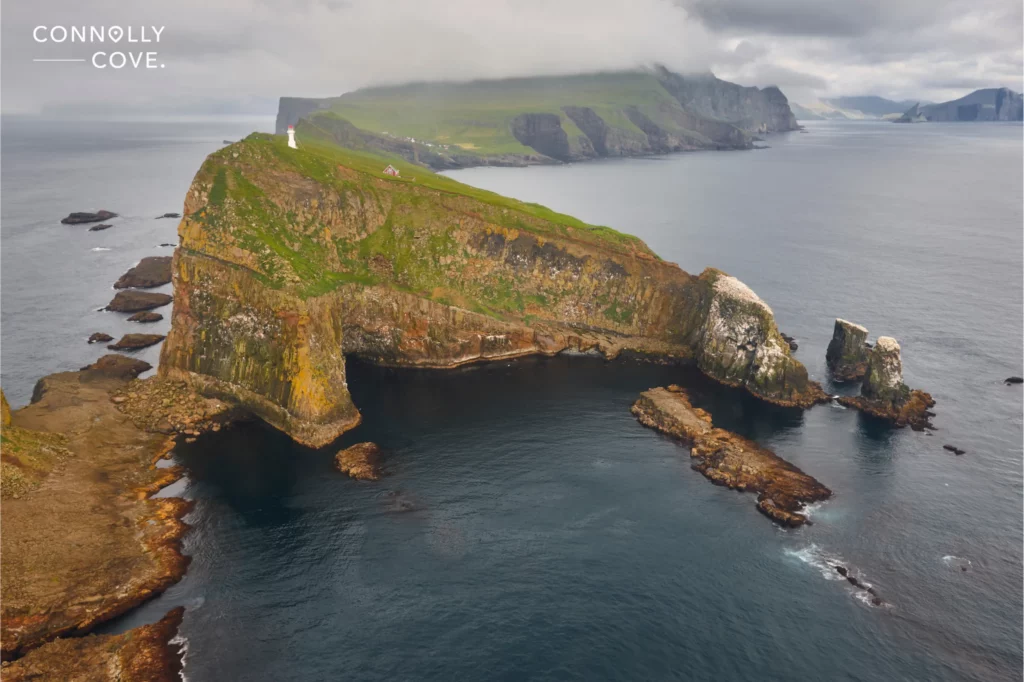
The Faroese people cherish their traditions, which are deeply rooted in their Viking origins. Their folkloric chain dance and music offer an excellent example of how history and culture are ideally engaged.
This community has a solid cultural identity that is the outcome of the Norse heritage. After all, Norse Viking explorers settled in the Faroe Islands in the 9th century. These early settlers brought their language, Old Norse, as well as their customs and laws. The Faroese language, a North Germanic language, is now the official language, and it is similar to Icelandic. The Faroese have such a deep-rooted connection to the sea, and fishing has long been the backbone of their economy and identity.
Various cultural festivals and events are celebrated throughout the year. The Ólavsøka festival, held on 28 July, is the national holiday of the Faroe Islands and commemorates the introduction of Christianity to the islands. During this festival, people come together to enjoy music, dance, sports, and traditional food.
It is this unique blend of history and culture that has allowed the Faroese people to maintain their identity and traditions in an ever-changing world.
The Cuisine of the Faroe Islands
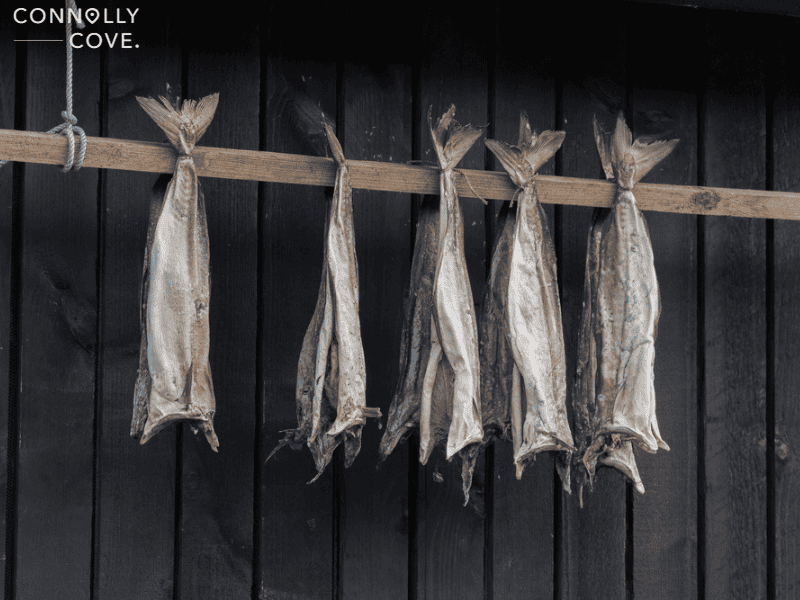
Still sticking to their traditions, the Faroese people won’t introduce any twists to their cuisine, which is a reflection of the rugged and isolated nature of this North Atlantic archipelago. With a heavy emphasis on local ingredients, Faroese recipes showcase the islanders’ resourcefulness and connection to their environment.
One of the staples of the Faroese diet is fish, particularly salmon and cod, which are prepared in many ways, from simple curing to the more complex method of fermenting and drying mutton.
Due to the limited arable land, vegetables are not as prominent, but you can find locally grown root vegetables, cabbage, and herbs. The Faroese cuisine truly encapsulates the spirit of the islands, with its emphasis on preserving traditions while adapting to the challenging climate and natural resources.
The Climate in the Archipelago
The climate in the Faroe Islands is characterised by its maritime and subpolar nature. The weather is variable and can change rapidly. Winters are relatively mild, with average temperatures hovering just above freezing, and snowfall is intermittent.
Summers are cool, with average highs rarely exceeding 15°C. Rainfall is abundant throughout the year, and fog is a common occurrence. The islands are also known for their strong and persistent winds — such a dramatic climate!
The best time to visit depends on your preferences and what you aim to experience. From June through August, summer is the most popular season, when the islands are adorned with lush green landscapes, abundant birdlife, and pleasantly mild temperatures. It’s ideal for hiking, birdwatching, and enjoying the long, sunlit days.
However, spring and autumn offer captivating views of the changing seasons and a sense of tranquillity if you prefer a more intimate atmosphere. Wintertime, especially from November to February, presents a chance to witness the mesmerising Northern Lights and experience the cosy charm of Faroese culture. It is your call!
Welcome to the Faroe Islands: A Nature’s Masterpiece
Hidden away from the bustling tourist routes of Europe, a collection of 18 rugged and enchanting islands is waiting to be discovered. This is not the dream destination of any traveller, though. Only nature lovers who are brave enough to venture to such remote outposts would find it worth every penny and all the trouble.
For those doughty guys, we welcome you to the Faroe Islands —a place untouched by time. Remote and captivating as they are, the islands are only a self-governing slice of Scandinavia within the Kingdom of Denmark.
This tucked-away archipelago is punctuated by towering cliffs, cascading waterfalls, and charming villages. If there is a place where nature reigns supreme, it is definitely on the Faroe Islands. Well, you can simply call them the Faroes!
Located in the North Atlantic Ocean, those islands have a unique and rich cultural heritage —the echoes of Viking heritage resonate through every fjord and mountain pass of those gems in the northern reaches of Europe.
The Natural Beauty of The Faroe Islands
Want to know what the true definition of raw and unspoiled nature is? Visit the Faroes! There, you can’t tell if untamed nature is synonymous with the islands or if it is the other way around. What we know for sure is that the Faroe Islands are one of the go-to places for nature enthusiasts. So, close your eyes, take a deep breath, and enjoy!
Marvel at the Amazing Sea Stacks!
Gracing the harsh coastline of the Faroes, towering pillars of rock rise dramatically from the sea, forming what is known as sea stacks. Those impressive sea stacks are among the many natural marvels that are seen as a symbol of the Faroese identity. They stand out as some of the most captivating and awe-inspiring geological formations on Earth.
The sea stacks are primarily composed of basalt, a type of volcanic rock that was formed during ancient volcanic eruptions and has since been sculpted into their current stunning shapes.
The sea stacks are not just geological wonders but also serve as vital nesting grounds for seabirds. Puffins, kittiwakes, guillemots, and other species flock to these towering columns to breed. Birdwatchers will surely be happy to see that!
The Drangarnir Sea Stacks
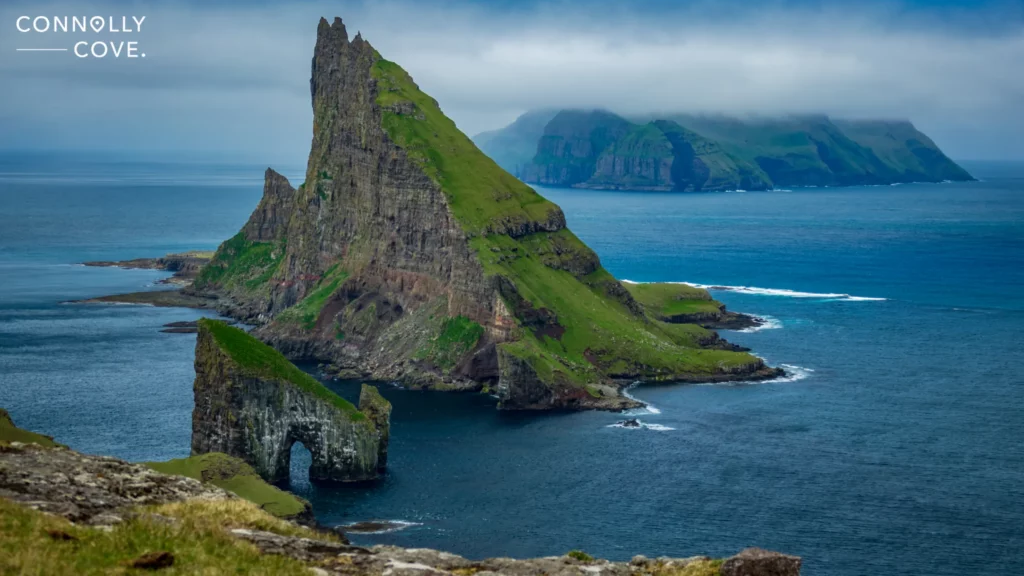
One of the most famous sea stacks in the Faroe Islands, Drangarnir is located off the island of Vágar and offers a striking visual contrast between its dark basalt structure and the surrounding blue waters. Drangarnir is a slender sea stack with a horizontal rock connecting it to the mainland.
Risin og Kellingin
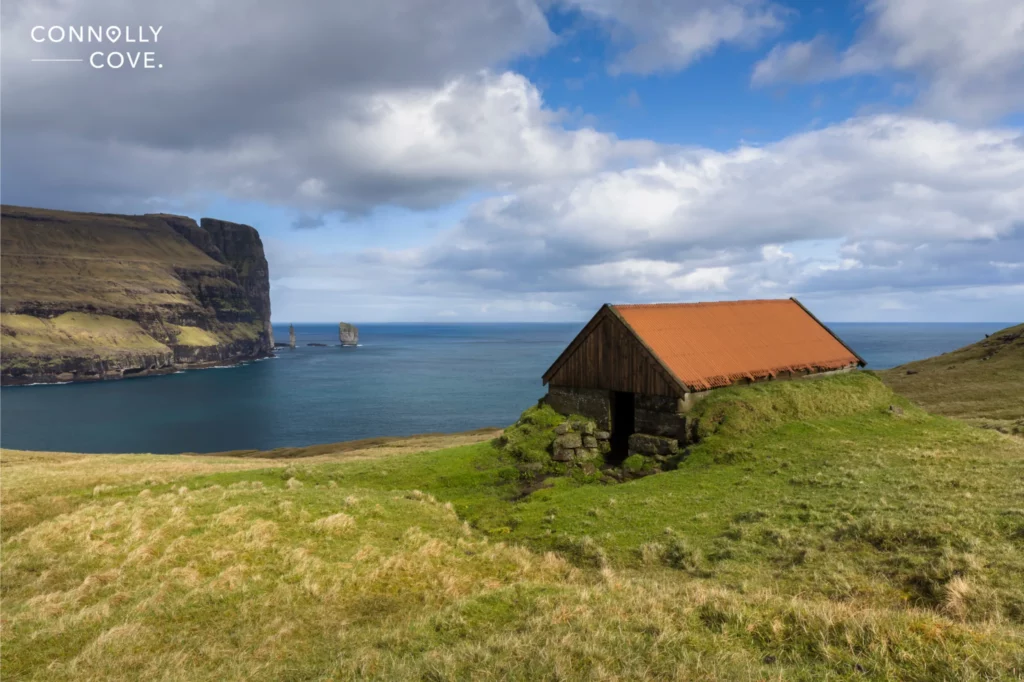
These sea stacks, whose names translate to “The Giant and the Witch,” are perhaps the most iconic in the Faroe Islands. They rise from the sea just off the northern coast of the island of Eysturoy.
Villages and Valleys
The Faroe Islands are renowned for their picturesque villages that were designed to fit within the valleys. These villages, with their colourful houses, often seem to cling to the rugged cliffs that surround them, creating a landscape that is perfect for postcards.
The islands are blessed with lush green valleys that stretch between towering mountains. The dense grasses are often grazed by sheep, creating a harmonious blend of nature and agriculture. Now you know that in the Faroes, the sheep have the right of way!
Gasadalur: A Fairy-Tale-Like Charm
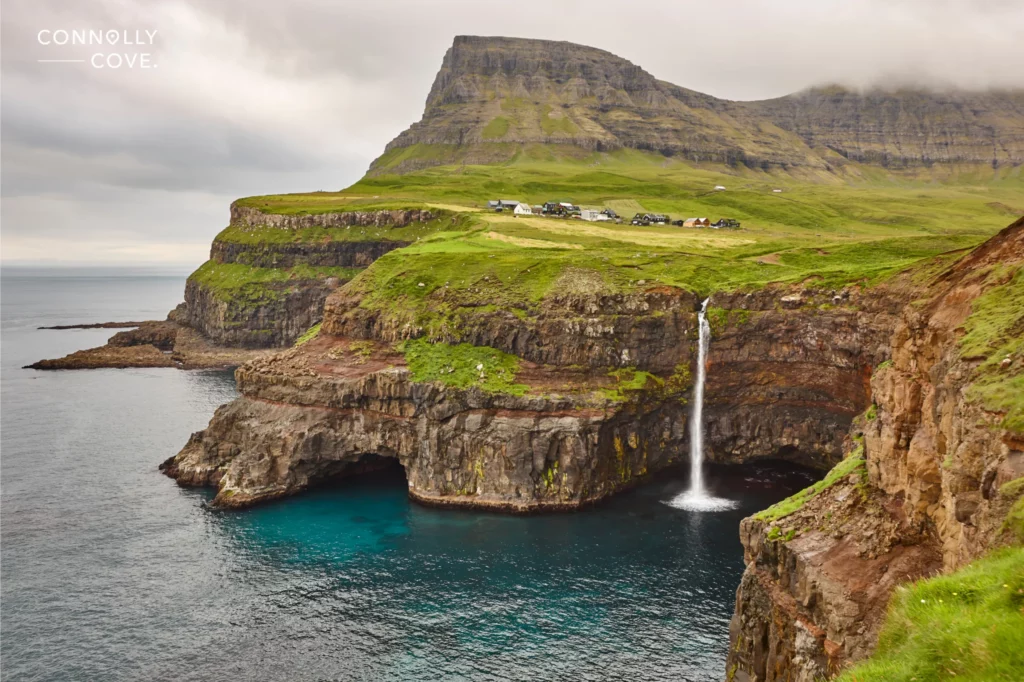
This village on the island of Vágar is known for its breathtaking natural surroundings and traditional Faroese architecture. Gasadalur is perched on the edge of a cliff overlooking the North Atlantic Ocean.
Fun fact: The village’s isolation is one of its defining features, as it was historically only accessible by foot over a steep and challenging mountain pass. That remained the case for so long, until 2004, when a tunnel and a road were constructed, significantly improving accessibility.
Gasadalur is surrounded by towering cliffs, lush green landscapes, and stunning waterfalls. The most iconic of these waterfalls is the Múlafossur, which plunges from the cliffs into the ocean, providing a magnificent backdrop to the village. The sight of water cascading down the cliffs is just mesmerising.
Traditional Faroese architecture is a defining feature of Gasadalur. This village boasts turf-roofed houses that add to its charm and make it feel like a place frozen in time.
A Network of Fjords & Trails
Cut into the Faroese landscape, fjords create a grid of sheltered inlets and narrow waterways. These natural formations offer a sense of serenity, and they are often explored by boat or kayak, allowing visitors to immerse themselves in the tranquillity of the surroundings.
Adventure travellers, however, would find a network of hiking trails more thrilling, providing close encounters with the natural beauty. The topography ranges from challenging mountain paths to peaceful coastal walks, offering hikers of all levels an opportunity to appreciate the stunning scenery.
Travellers United in Love of Isolated Islands
Indeed, the Faroe Islands remain relatively isolated and less explored than many other destinations, but they never fail to satisfy the whims of visitors. What’s special about this place is a sense of serenity and solitude that is often hard to find in more crowded tourist areas.
Yes, it is such a remote sanctuary for those who seek solace in nature’s embrace, but no, it is not that lonely. An outdoor enthusiast seeking rugged adventures or a cultural explorer eager to immerse yourself in the island’s traditions, you will find something to enjoy in the middle of the wild charm of these islands.
This extraordinary destination promises to leave you with memories that will last a lifetime. Come and experience the magic of the Faroe Islands for yourself, and let these enchanting islands cast their spell upon your heart.




